You can tell the age of a tree by counting the rings.
It’s the same with boats – except, with boats, you count cable ties.
I am well aware that Samsara is an old boat because any time I investigate the wiring, I discover that generations of previous owners have been most fastidious when adding new electrical gadgets – each one making sure to keep the wiring tidy by attaching the new cable to the existing network with cable ties – more cable ties.
This means that what started in 1973 as a single wire to the nav lights on the pulpit soon doubled up with the fo’c’sle reading lights … and then the blower to ventilate the wardrobe locker, a tape player, cool box, more lights for the fo’c’sle (why?) Then, we had all the stuff for the mast – lights, wind instrument and, in due course, a great fat information highway for the radar. And that was all before the owner before the owner before last added an electric windlass.
I was aware of all this, of course – and not unduly troubled. I just added a few more ties when I decided the perfect place for the fan was between the fridge and the heater (the theory was that it would draw cool air towards the one and then blow the warmed exhaust across the other – as I say, that was the theory).
And then, today, I set about installing the new “active” antenna for the Navtex. This meant routing it from the chart table back to the pushpit – although, of course, you do it the other way round because you’d never get the aerial through all the little holes.
Also, it meant taking out the old cable.
I believe I may be the first owner to think of this. Every time I look in a locker, I find redundant wiring – some of it already snipped off…some, indeed, still connected to 12volts at the other end…
Now I understand why. The old Navtex cable was secured at every opportunity – either to the cable for the stern light – which, like the port and starboard on the pulpit, had obviously claimed first mover’s rights. The stern light’s cable ties were screwed to the deckhead, the back of the navigator’s seat, the shelf above what might once have been a quarter berth. There was even a bit of conduit in there at one point.
And where the stern light cable went, so did the Navtex cable – and the autopilot cable – and a tiny and ancient bit of domestic two-core with a piece of plastic tape wrapped around it clearly stating “ply~??x”. I suspect that this must be some obscure translation of “compass light”. It was disconnected at both ends.
Meanwhile, how was I supposed to extricate it now that it had been joined by a GPS, a plotter, a wind charger and a water charger – each with its own collection of cable ties? I found five of them at one point – by which I mean five in the same place, literally on top of each other.
Like an enthusiastic gardener with a new set of secateurs, I set to work with the wire cutters.
This can be a problem. It’s not long since I snipped off the port forward cabin light. How was I to know someone had decided to route it through the front of the heads compartment and then back down the other side?
Gradually the pile of snipped-off cable ties grew – like dead-heads in July. A heap of ancient wire piled up alongside it. I could feel the boat getting lighter as I worked.
It would be interesting to know just how many redundant cable ties there were. It should be 50, of course – since the boat came out of her mould in 1973. But by the time I thought of counting them, I had already thrown them away.
Anyway, it would have been pretty pointless: I’ve been finding more all evening – under the table, under the tea towel, in my coffee cup (noticed that just in time) and – I knew there was something wrong – inside my shirt…
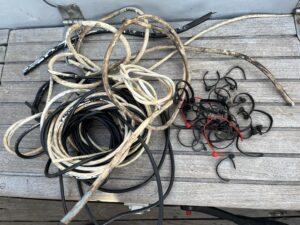

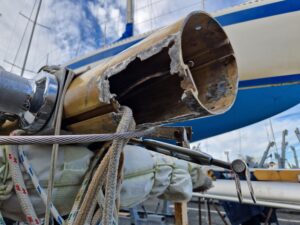

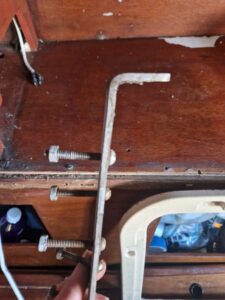
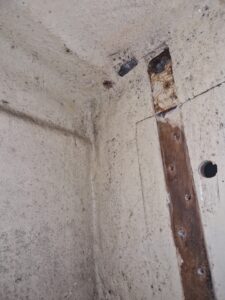
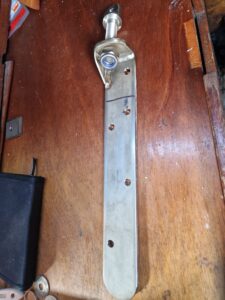

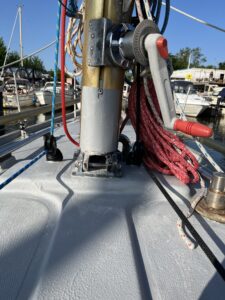
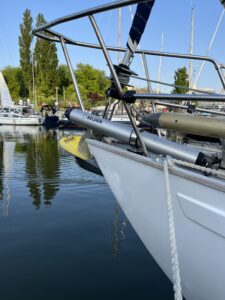
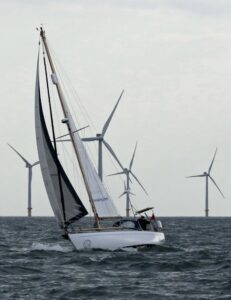
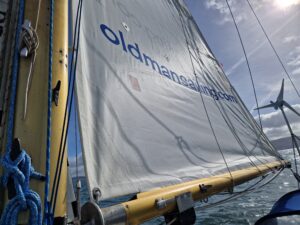
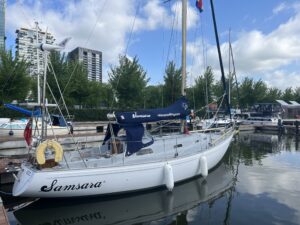
With every respect, after reading this I must decline any invitation to go to sea with you in Samsara.
But good luck to all who sail in her!
Always useful to remove all cut cable ties. They’re the perfect size to end up in the bilge jamming bilge pumps…
I can well relate to your pain. The original owner had asked for all skin fittings to be grounded, the extra wiring is good for attaching everything else to. To add to it they all run through conduit – whoever thought putting the cable ties on at regular intervals before pulling it through the conduit should be shot.
I really do enjoy reading your posts !! Living the dream !
And all the wires are the same colour. Tracing anything is a nightmare. I keep a “special “ length which can reach anywhere from bow to stern with a connector to join onto my multimeter. Oh the fun we’ve had. Btw my boat is 1974.
Wiring! oh what a joy……One question JP. When choosing the word ‘Secateurs’ did you have to look up the spelllling 😉
Of course not!
I stripped all wiring out of my campervan and started again. Much tidier. And it was only built in 2006!
Ah Patrick, but you know how to do it!